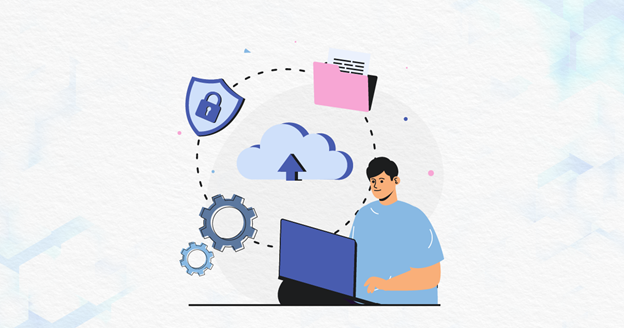 A startup must navigate the delicate balance of innovation and cost-effectiveness to reach new heights, just like a tightrope walker. Startups thrive on efficiency! Efficient cloud cost optimization is the key to unlocking explosive growth and achieving long-term success. Cloud cost optimization frees up precious capital for crucial investments in the business such as product development or marketing for growth initiatives.
A startup must navigate the delicate balance of innovation and cost-effectiveness to reach new heights, just like a tightrope walker. Startups thrive on efficiency! Efficient cloud cost optimization is the key to unlocking explosive growth and achieving long-term success. Cloud cost optimization frees up precious capital for crucial investments in the business such as product development or marketing for growth initiatives.
Savvy startups understand that cloud cost optimization demonstrates financial maturity and positions them for sustainable growth, making them attractive investment candidates.
Start-ups and Cloud Cost Optimization
Unmanaged cloud costs can be a hidden drain on a startup’s limited resources, jeopardizing its growth potential. Limited resources and the constant need for agility define the cloud infrastructure needs of startups. They require flexible and scalable solutions to keep pace with ever-changing market dynamics.
Due to their inherent resource limitations, start-ups face a steeper penalty for inefficient cloud cost optimization and a single misstep can derail their growth trajectory. A strategic approach to cloud cost savings unlocks significant resources for startups, fueling their ability to innovate and scale. For startups, cloud cost optimization isn’t optional – it’s crucial for survival.
Luckily, a diverse toolbox of techniques exists to achieve it. Let us dive in.
Key Strategies for Cloud Cost Optimization for Start-ups
- Identify Spend: Understand cloud cost optimization tools to drive insights from the trends. As the start-up scales, so will the infrastructure and cloud costs which can be quickly viewed and assessed by cloud cost optimization tools. Cloud dashboards are a must-have – track usage and optimize spending for a leaner cloud strategy. IT staff should monitor or track cloud usage regularly with the help of cloud cost management tools. Cloud optimization services help in making informed cost decisions. This practice can significantly result in cloud cost savings. Monitoring and tracking cloud spending can help startups identify areas where they may be overspending and take action to correct it. Startups can also set budget alerts to receive notifications when their costs reach a certain threshold.
- Architectural adjustments: Streamlining the architecture is also a prime way to increase cloud cost savings. Resources when not in use should be turned off. This is one of the easiest and quickest ways to ensure cloud cost savings. In an average workweek, 70% of the hours are non-working hours hence this simple process is a great way to reduce cloud cost. Tags can be used to identify which resource to switch off between production and non-production resources. Likewise, workloads that aren’t constantly running can be turned off and turned back on again when needed.
Keeping a close eye on your computing resources and scaling them appropriately is a powerful money-saving strategy for cloud users. This ensures that your company isn’t paying for cloud capacity that isn’t being used. Auto scaling services help to track and alter use scales to fit demand, and may thus be utilized to save money. So for start-ups, capacity planning is an important strategy that can result in cloud cost savings.
- Usage Discount: Cloud resource charges are on-demand, reserved, and volume.
On-demand: in this pricing model, the cloud provider offers compute instances only when you need them and on-demand usually is the most expensive option.
Reserved: If computing is required for a longer length of time and you can pay in advance, then reserved computing is the option. Reserved is less expensive than on-demand.
Volume: In this type, payment to the cloud provider is done in advance which guarantees the cloud provider its income, so in this type of computing the cloud providers offer the best deals. Volume purchases give you the best discounts.
According to the usage requirements, the discounts can be utilized for effective cloud cost savings.
- Building Cost Awareness Culture: FinOps culture should be introduced in each department and team. By building a cloud cost optimization mindset in the organization, each employee takes responsibility for their actions resulting in overall cloud cost reduction for the organization. It empowers individual teams to take complete responsibility for their cloud usage and costs.
Conclusion
Cloud cost optimization is a marathon, not a sprint! Startups should make a habit of regularly reviewing costs and usage patterns. By adapting their strategies as needed, they can become masters of cloud cost management, unlocking the resources they need to propel their business forward.
For resource-constrained startups, cloud cost optimization is a game-changer. Uncontrolled spending can quickly eat away at their ability to innovate and experiment. However, by adopting strategic techniques like right-sizing instances and leveraging automation, startups can unleash the full potential of the cloud. This not only leads to cloud cost savings but also empowers them to be more agile, adapt quickly to market changes, and ultimately achieve explosive growth.



















Great insights! As a budding entrepreneur navigating the cloud landscape, these strategies are invaluable for ensuring optimal cost management while scaling up our start-up. Thanks for sharing!